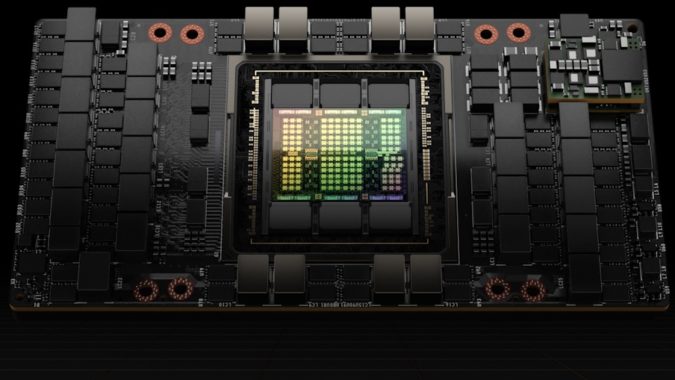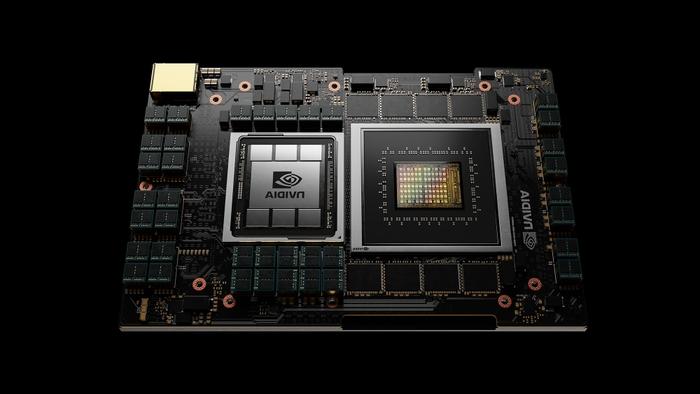Back at GTC, Nvidia revealed the 144-core Grace CPU Superchip, the company’s first CPU-only Arm chip targeted for the data centre. Nvidia released a benchmark that claimed a 1.5X advantage over AMD’s EPYC, but it wasn’t very useful because it was against a previous-gen model.
However, buried in a GTC presentation by Nvidia’s vice president of its Accelerated Computing business area, Ian Buck, we discovered a Grace vs. Ice Lake test. In a Weather Research and Forecasting (WRF) model typically used in HPC, Grace is said to be 2X quicker and 2.3X more energy-efficient than Intel’s current-gen Ice Lake.
Grace is 1.5 times quicker than two previous-gen 64-core EPYC Rome 7742 processors in the SPECrate 2017 benchmark, according to Nvidia’s first benchmark, and it will deliver twice the power efficiency of today’s server chips when it debuts in early 2023. Those benchmarks, however, are for previous-generation CPUs – the Rome chips will be four years old by the time Grace arrives next year, and AMD has already begun releasing its faster EPYC Milan.
We should expect Nvidia’s Grace to be on a level with the newer Milan in terms of performance and performance-per-watt, given the comparison to Rome. Even yet, the comparison is pointless because AMD’s EPYC Genoa will be released in 2023 and will be even faster.

As a refresher, Nvidia’s Grace CPU Superchip is a 144-core Arm v9 Neoverse (N2 Perseus) processor fused with Nvidia’s newly branded NVLink-C2C connection innovation that delivers 900 GB/s of throughput and memory coherency. In addition, the chip employs 1TB of LPDDR5x ECC memory, which has a memory bandwidth of up to 1TB/s, which is twice as fast as comparable data centre processors that support DDR5.
And, make no mistake, the Grace CPU Superchip’s increased memory throughput complements the Grace CPU Superchip’s strengths in the Weather Research and Forecasting (WRF) model above. In the WRF simulation, Nvidia claims that its 144-core Grace chip will be 2X faster and provide 2.3X the power efficiency of two 36-core 72-thread Intel ‘Ice Lake’ Xeon Platinum 8360Y processors. That means 144 Arm threads (each on its physical core) are competing with 144 x86 threads (two threads per physical core).
Nvidia is yet to move to CUDA
WRF is a collection of real-world workloads that are often used for benchmarking, and many of the modules have been moved over to CUDA for GPU acceleration. Nvidia stated that this module has yet to be moved to GPUs, hence it is CPU-centric. Grace also has a performance and efficiency advantage due to its sensitivity to memory bandwidth. Nvidia’s predictions are based on “standard NCAR WRF, version 3.9.1.1 adapted to Arm, for the IB4 model (a 4km regional forecast of the Iberian peninsula).”
Grace’s massive memory throughput will pay off in terms of performance and energy efficiency, as it will reduce the number of dormant cycles by keeping the greedy cores fed with data. In comparison to Ice Lake’s DDR4, the chips employ lower-power LPDDR5X.

As a refresher, Nvidia’s Grace CPU Superchip is a 144-core Arm v9 Neoverse (N2 Perseus) processor fused with Nvidia’s newly branded NVLink-C2C connection innovation that delivers 900 GB/s of throughput and memory coherency. In addition, the chip employs 1TB of LPDDR5x ECC memory, which has a memory bandwidth of up to 1TB/s, which is twice as fast as comparable data centre processors that support DDR5.
Grace, on the other hand, is unlikely to have an edge over Intel’s future Sapphire Rapids, which support DDR5 memory and also features HBM memory variations that could assist mitigate Grace’s capabilities in memory-bandwidth-constrained workloads. AMD also offers the Milan-X, which features a 3D-stacked L3 cache (3D V-Cache) that favours particular workloads, and we expect AMD to offer similar SKUs for the EPYC Genoa family.
also read:
AMD patents a 3D-stacked machine learning accelerator design for its new CPU




